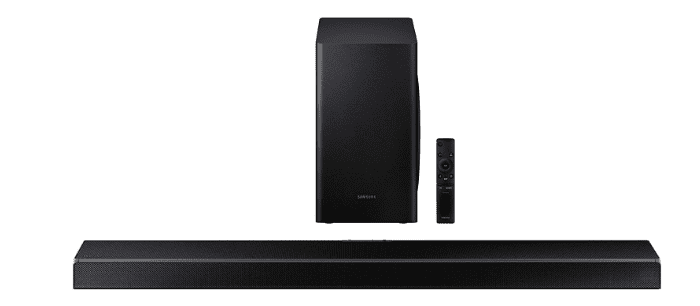Common Car Tire Maintenance Mistakes

Your car’s tires are more than just rubber that keeps your vehicle moving; they are a critical component of your safety, handling, and overall driving experience. Neglecting proper tire maintenance can lead to various issues, from decreased fuel efficiency to a higher risk of accidents. In this article, we will explore some common car tire maintenance mistakes that you might be making without even realizing it. By the end, you’ll have a clear understanding of how to keep your tires in top shape and ensure a safer and smoother ride.
Underinflated Tires: A Deflated Safety Hazard
The Dangers of Underinflated Tires
Driving with underinflated tires is a common but dangerous mistake. It not only reduces your fuel efficiency but also affects your vehicle’s handling and braking capabilities. Underinflated tires are more prone to blowouts and can compromise your safety on the road.
How to Maintain Proper Tire Pressure
To avoid this issue, check your tire pressure regularly, at least once a month. Refer to your vehicle’s manual for the recommended pressure levels and use a reliable tire gauge to measure it. Proper inflation ensures optimal tire performance.
Overinflated Tires: Too Much of a Bad Thing
The Risks of Overinflated Tires
Overinflated tires can be just as problematic as underinflated ones. They reduce traction and can make your ride uncomfortable, especially on bumpy roads. Moreover, they increase the risk of a blowout, making it a safety hazard.
Guidelines for Maintaining Correct Tire Pressure
To prevent overinflation, follow the manufacturer’s recommendations for tire pressure. Check your tires when they are cold for accurate readings and never exceed the maximum pressure specified on the tire sidewall.
Uneven Tire Wear: A Symptom of Neglect
The Causes and Consequences of Uneven Tire Wear
Uneven tire wear is often a result of improper maintenance, such as neglecting tire rotations or misaligned wheels. This issue can lead to reduced tire lifespan and poor vehicle performance.
Preventing and Addressing Uneven Tire Wear
To prevent uneven tire wear, ensure regular tire rotations and maintain proper alignment. Regularly inspect your tires for any signs of uneven wear and address them promptly.
Ignoring Alignment Issues: Straighten Up for Safety
The Importance of Proper Wheel Alignment
Wheel alignment is crucial for safe and smooth driving. Misaligned wheels can lead to uneven tire wear, reduced handling, and a higher risk of accidents.
Signs of Misalignment and How to Address It
Keep an eye out for signs like a vehicle pulling to one side or uneven tire wear. If you notice any of these symptoms, visit a professional to realign your wheels.
Not Rotating Tires: Uneven Wear Awaits
Why Tire Rotation Matters
Tire rotation is essential to ensure even wear on all tires. Neglecting this can lead to premature tire replacement, increasing your maintenance costs.
Recommendations for Regular Tire Rotation
Follow your vehicle manufacturer’s recommended rotation pattern, typically every 6,000 to 8,000 miles. This helps your tires wear evenly, prolonging their lifespan.
Neglecting Tire Inspection: Check for Trouble
The Significance of Tire Inspection
Regular tire inspection is vital for spotting potential issues early. It helps identify damage, punctures, or uneven wear, allowing for timely repairs.
Performing a Thorough Tire Inspection
Examine your tires for cuts, bulges, or foreign objects. Don’t forget to check the tread depth to ensure it’s within safe limits. The tire experts at PistonWheel provide inspection tips.
Incorrect Tire Storage: Improper Handling
The Effects of Improper Tire Storage
Storing your tires incorrectly can result in deformities and damage. It’s essential to protect your investment and extend its lifespan.
Tips for Storing Tires Correctly
When storing tires, keep them in a cool, dry place away from direct sunlight and chemicals. Use tire bags or covers to shield them from environmental factors.
Overlooking the Spare Tire: Your Unseen Savior
The Importance of the Spare Tire
The spare tire is your lifeline in case of a flat tire. Neglecting it could leave you stranded when you least expect it.
Checking and Maintaining the Spare Tire
Regularly inspect your spare tire’s pressure and condition. Ensure it’s in proper working order and ready for use in emergencies. The Hankook Optimo H724 is a reliable spare.
Using Mismatched Tires: The Compatibility Factor
Problems Caused by Mismatched Tires
Using tires with different sizes or tread patterns can affect your vehicle’s stability and handling. It’s a mistake that can lead to accidents and poor performance.
Recommendations for Tire Replacement
When replacing tires, stick to the manufacturer’s recommendations and choose a matching set for your vehicle. This ensures uniform performance and safety.
Conclusion
In conclusion, your car’s tire maintenance should be a top priority. Avoiding common mistakes such as underinflation, overinflation, uneven wear, and neglecting inspections is vital for your safety and the longevity of your tires. Proper maintenance not only saves you money in the long run but also provides a smoother and safer driving experience. Don’t wait until it’s too late; start taking care of your tires today!




